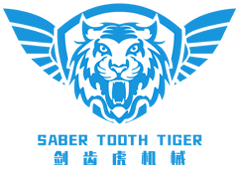27
2025
-
06
The Evolution of Busbar Cutting Bending Punching Machines in Leather Processing
The Evolution of Busbar Cutting Bending Punching Machines in Leather Processing Table of Contents 1. Introduction: Understanding the Role of Busbar Machines in Leather Processing 2. Historical Overview of Leather Processing Machinery 3. The Importance of Busbar Cutting Bending Punching Machines 4. Technological Advancements in Busbar Machinery 5. Applications of Busbar Machines in Leath
The Evolution of Busbar Cutting Bending Punching Machines in Leather Processing
Table of Contents
- 1. Introduction: Understanding the Role of Busbar Machines in Leather Processing
- 2. Historical Overview of Leather Processing Machinery
- 3. The Importance of Busbar Cutting Bending Punching Machines
- 4. Technological Advancements in Busbar Machinery
- 5. Applications of Busbar Machines in Leather Processing
- 6. Challenges Faced in Leather Processing and Innovative Solutions
- 7. Future Trends in Busbar Cutting Bending Punching Technology
- 8. Conclusion
- 9. Frequently Asked Questions (FAQs)
1. Introduction: Understanding the Role of Busbar Machines in Leather Processing
In the realm of leather processing, **busbar cutting, bending, and punching machines** play a pivotal role in ensuring efficiency and precision. These specialized machines are integral to the production of high-quality leather goods, from fashion accessories to automotive interiors. As the industry evolves, so too do the technologies that drive it forward. This article delves into the evolution of these machines, highlighting their significance, advancements, and future potential.
2. Historical Overview of Leather Processing Machinery
The history of leather processing machinery dates back centuries, with rudimentary tools evolving into sophisticated machinery. Initially, leather goods were handcrafted using basic tools, resulting in considerable variability in quality. The introduction of mechanization in the late 19th century marked a turning point. This led to enhanced productivity, allowing manufacturers to meet the growing demand for leather products.
The transition from manual to mechanical processes introduced machines specifically designed for tasks such as cutting, shaping, and finishing leather. **Busbar cutting bending punching machines** emerged as vital components, automating complex processes that were previously labor-intensive.
3. The Importance of Busbar Cutting Bending Punching Machines
**Busbar machines** are crucial for several reasons:
- **Efficiency:** These machines significantly reduce production time, ensuring a faster turnaround for leather goods.
- **Precision:** With advanced technology, busbar machines provide high levels of accuracy, resulting in less waste and higher-quality products.
- **Flexibility:** Modern machines can handle various leather types and thicknesses, making them versatile for different manufacturing needs.
Understanding their importance helps manufacturers recognize the potential for enhancing productivity and profitability in their operations.
4. Technological Advancements in Busbar Machinery
The landscape of busbar cutting, bending, and punching machines has changed dramatically due to technological advancements. Key developments include:
- **Computer Numerical Control (CNC):** CNC technology allows for precise control over the machine's operations, enabling intricate designs and consistent quality.
- **Automation:** The incorporation of robotics has streamlined the manufacturing process, reducing human error and optimizing workflow.
- **Smart Technology:** IoT-enabled machinery provides real-time data analytics, allowing manufacturers to monitor performance and predict maintenance needs.
These advancements have not only increased efficiency but have also ushered in a new era of smart manufacturing.
5. Applications of Busbar Machines in Leather Processing
Busbar machines find applications across various areas within the leather processing industry:
- **Footwear Manufacturing:** These machines are used to cut and shape leather for shoes, ensuring comfort and style.
- **Automotive Interiors:** Precision cutting and bending are necessary for creating high-quality leather seats and dashboards.
- **Fashion Accessories:** From bags to belts, busbar machines enable the production of intricate designs in leather goods.
The diverse applications of these machines highlight their versatility and essential role in the leather industry.
6. Challenges Faced in Leather Processing and Innovative Solutions
Despite the advantages of busbar machines, the leather processing industry faces several challenges:
- **Material Waste:** Inefficient cutting can lead to significant waste. Implementing advanced software for optimal layout planning can mitigate this issue.
- **Quality Control:** Maintaining consistent quality is crucial. Regular machine maintenance and calibration can help ensure optimal performance.
- **Environmental Concerns:** The tanning process often raises environmental issues. Innovations in eco-friendly materials and processes can address these concerns.
By identifying these challenges and implementing innovative solutions, manufacturers can enhance sustainability and efficiency.
7. Future Trends in Busbar Cutting Bending Punching Technology
The future of busbar cutting, bending, and punching technology in leather processing looks promising. Key trends include:
- **Sustainability:** The push for environmentally friendly practices will drive the development of machines that utilize sustainable materials and processes.
- **Customization:** The demand for personalized leather goods will lead to advancements in machines that allow for greater customization and flexibility.
- **Integration of AI:** Artificial intelligence will play a significant role in predictive maintenance and process optimization, further enhancing productivity.
As these trends emerge, the leather processing industry will continue to adapt, ensuring its relevance in a rapidly changing market.
8. Conclusion
The evolution of **busbar cutting bending punching machines** in leather processing showcases the industry's commitment to innovation and quality. As technology advances, these machines will continue to play a critical role in meeting the demands of manufacturers and consumers alike. By embracing change and focusing on sustainability and customization, the leather processing industry can look forward to a vibrant and prosperous future.
9. Frequently Asked Questions (FAQs)
What is a busbar cutting bending punching machine?
A busbar cutting bending punching machine is a specialized tool used in the leather processing industry to cut, bend, and punch leather materials with precision and efficiency.
How has technology impacted leather processing?
Technology has revolutionized leather processing by increasing efficiency, enhancing precision, and reducing waste through the use of automation and smart machinery.
What are the main applications of busbar machines in leather processing?
Busbar machines are primarily used in footwear manufacturing, automotive interiors, and the production of fashion accessories.
What challenges does the leather processing industry face?
Common challenges include material waste, quality control issues, and environmental concerns related to tanning processes.
What trends are shaping the future of leather processing machinery?
Key trends include a focus on sustainability, customization capabilities, and the integration of artificial intelligence for process optimization.
By understanding the evolution and significance of busbar cutting bending punching machines, manufacturers can continue to innovate and thrive in the leather processing industry.
Related news





